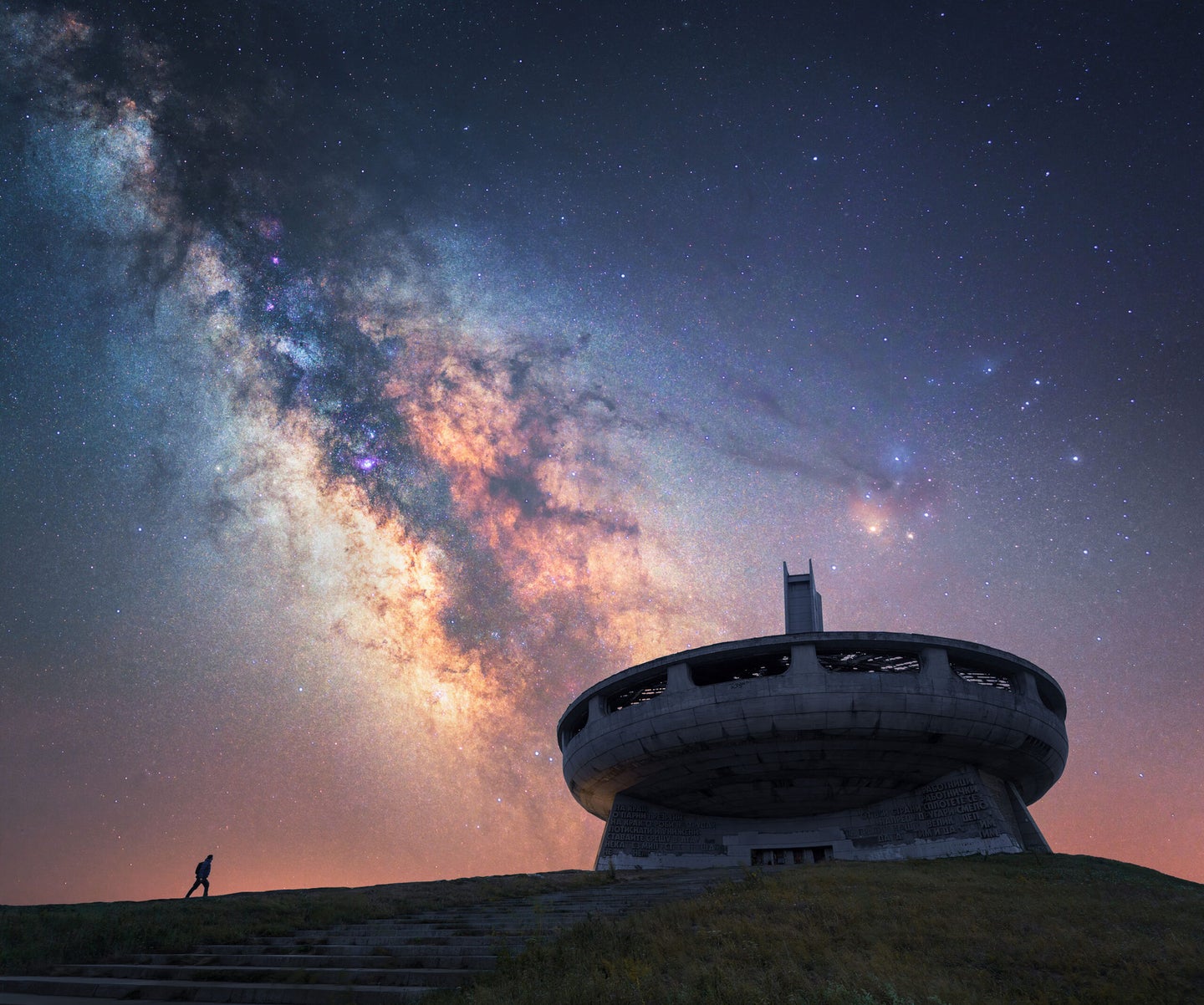
An aurora dances, illuminating the night sky. The Milky Way stretches across snowy mountain tops. An abstracted view of the sun and moon. These images and more make up the winning cohort for this year’s Astronomy Photographer of the Year awards, which are put on anually by the Royal Observatory Greenwich in London.
About the Astronomy Photographer of the Year
Related: Feast your eyes on these brilliant astronomy photos
In its 14th year, the Astronomy Photographer of the Year awards whittled down over 3,000 submissions from 67 countries to crown the winners. The competition is hosted by the Royal Observatory Greenwich, and the images are on display at the National Maritime Museum in London starting September 17.
The goal of the awards is to present the best space photography from around the world. Photographers can enter images into the following categories: Aurorae; Galaxies; Our Moon; Our Sun; People and Space; Planets, Comets, and Asteroids; Skyscapes; Stars and Nebulae; and the Young Competition. There are also two special prizes, the Sir Patrick Moore Prize for Best Newcomer and the Annie Maunder Prize for Image Innovation.
The grand prize winner receives £10,000 (approximately $11,400), while the Young Astronomy Photographer of the Year nets £1,500 ($1,700). Runners-up and highly commended entries will see £500 ($570) and £250 ($285), respectively. All winners receive a one-year subscription to BBC Sky at Night Magazine.
Astronomy Photographer of the Year
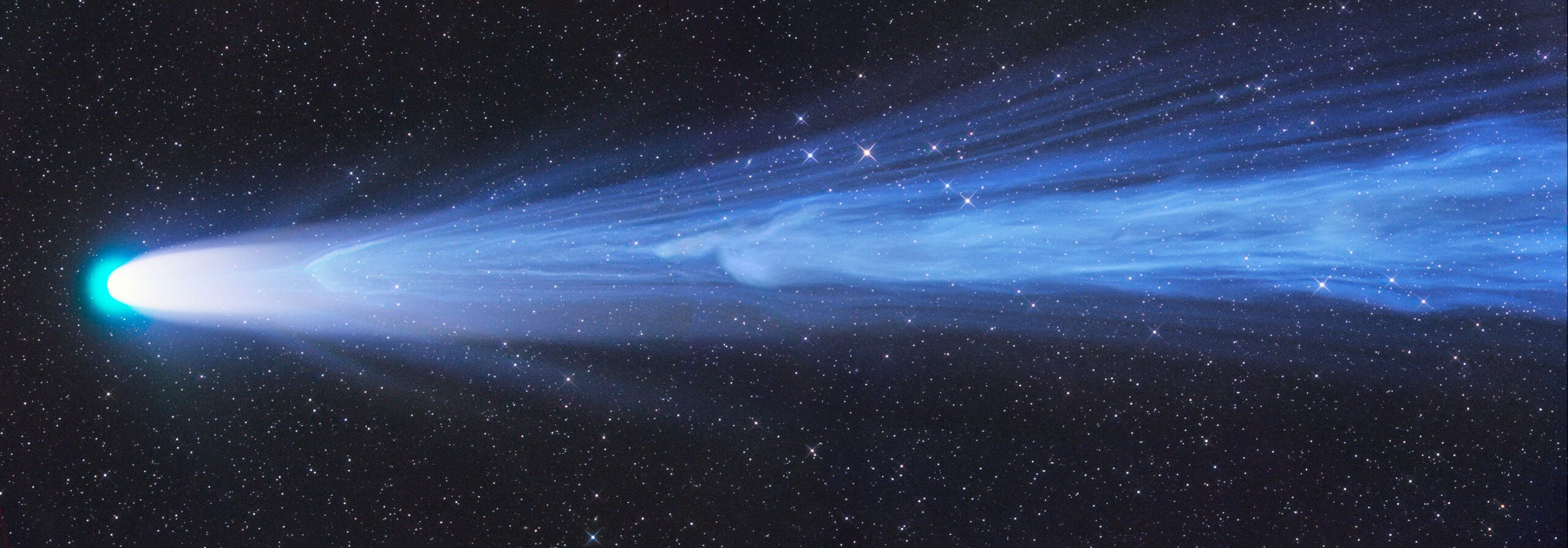
Related: Best telescopes
Also the winner of the “Planets, Comets, and Asteroids” category, Gerald Rhemann now bears the title of Astronomy Photographer of the Year with his image, Disconnection event. The picture shows Comet Leonard’s gas tail being swept away by solar wind.
“Rhemann’s astonishing image of Comet Leonard, a long-period comet first identified in January 2021, was captured by the Austrian photographer in Namibia on Christmas Day. Comet Leonard was the brightest comet of the year in 2021 but won’t be seen from Earth again,” the jury writes.
“When I first saw this image of Comet Leonard, I was blown away. This picture of a recent visitor to our Solar System has been captured beautifully. The stars in the background give the comet’s tail a magical appearance. I could stare at this image all day,” commented Melissa Brobby, judge and Social Media Officer for the Institute of Physics.
Young Astronomy Photographer of the Year
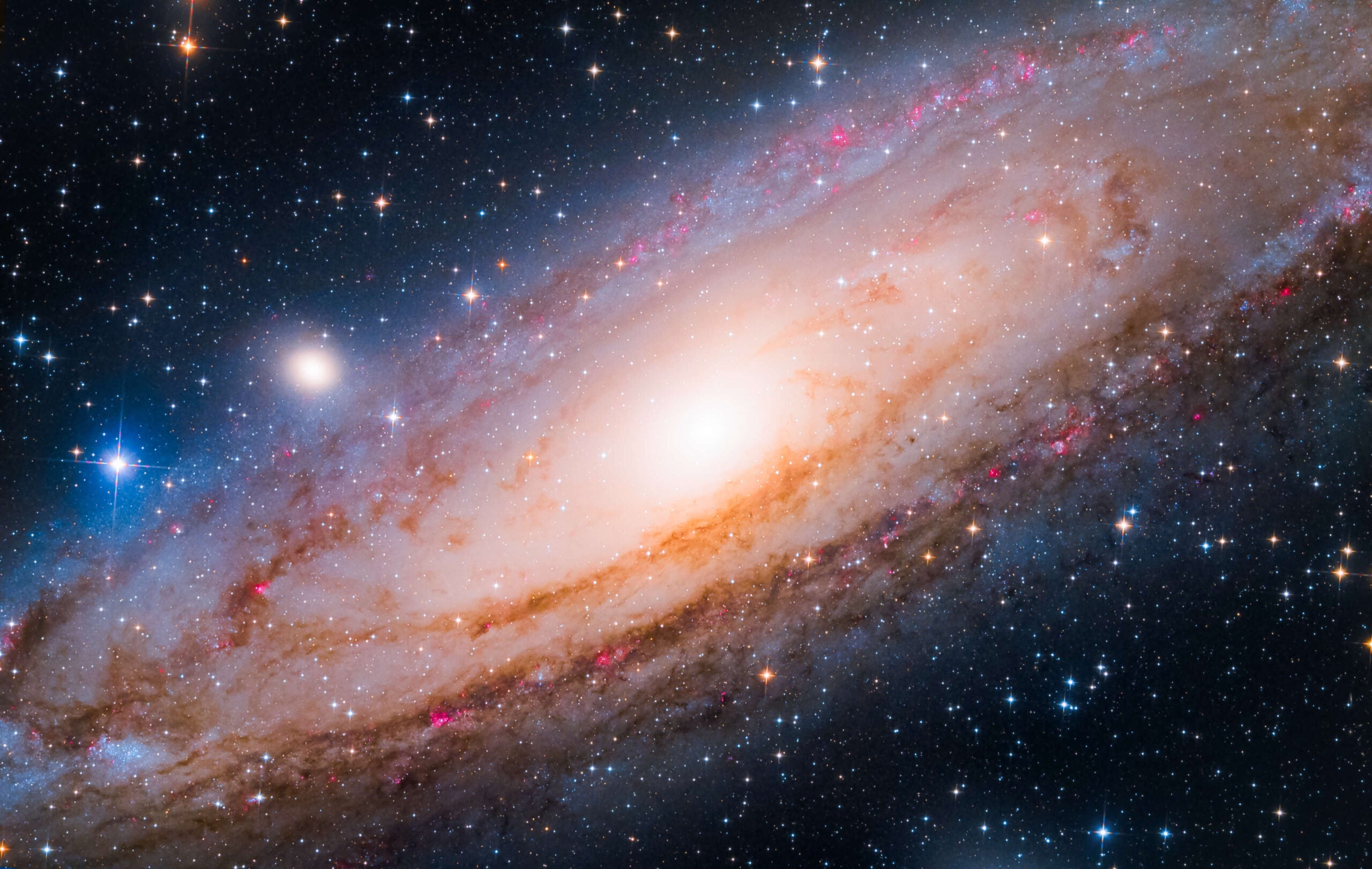
A team of plucky 14-year-olds snagged the Young Astronomy Photographer of the Year prize. Yang Hanwen and Zhou Zezhen submitted a photo of the Milky Way’s closest and largest neighbor, the Andromeda Galaxy.
“I think this photo shows how gorgeous our nearest neighbor is,” Hanwen says. “One of the main functions of astrophotography is to attract more people to fall in love with astronomy by showing the beauty of the Universe,” adds Zezhen.
The judges were impressed, too.
“It is a superb capture by young astrophotographers, who also demonstrate their exceptional talent in processing a deep-sky photo.” writes László Francsics, judge and Chairman of the Hungarian Astrophraphers’ Association.
Skyscapes
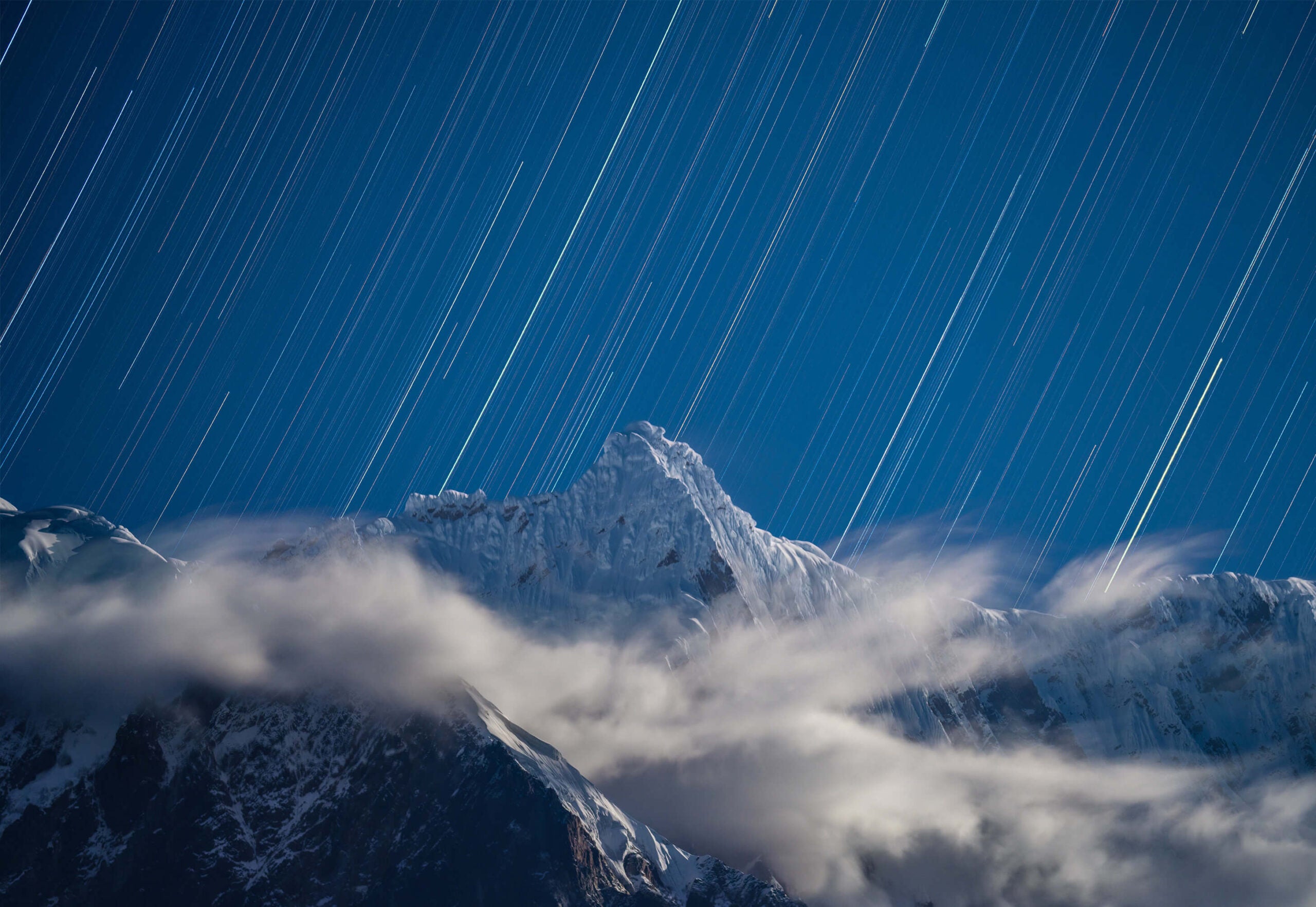
Zijui Hu’s winning image uses light trails to give the illusion of speed, evoking a scene reminiscent of Star Wars against the dramatic backdrop of a mountain peak rising above the fog.
“I love the juxtaposition of the star trails against the clear peak of the mountain. The motion of the clouds adds to the drama,” Hu says.
People & Space
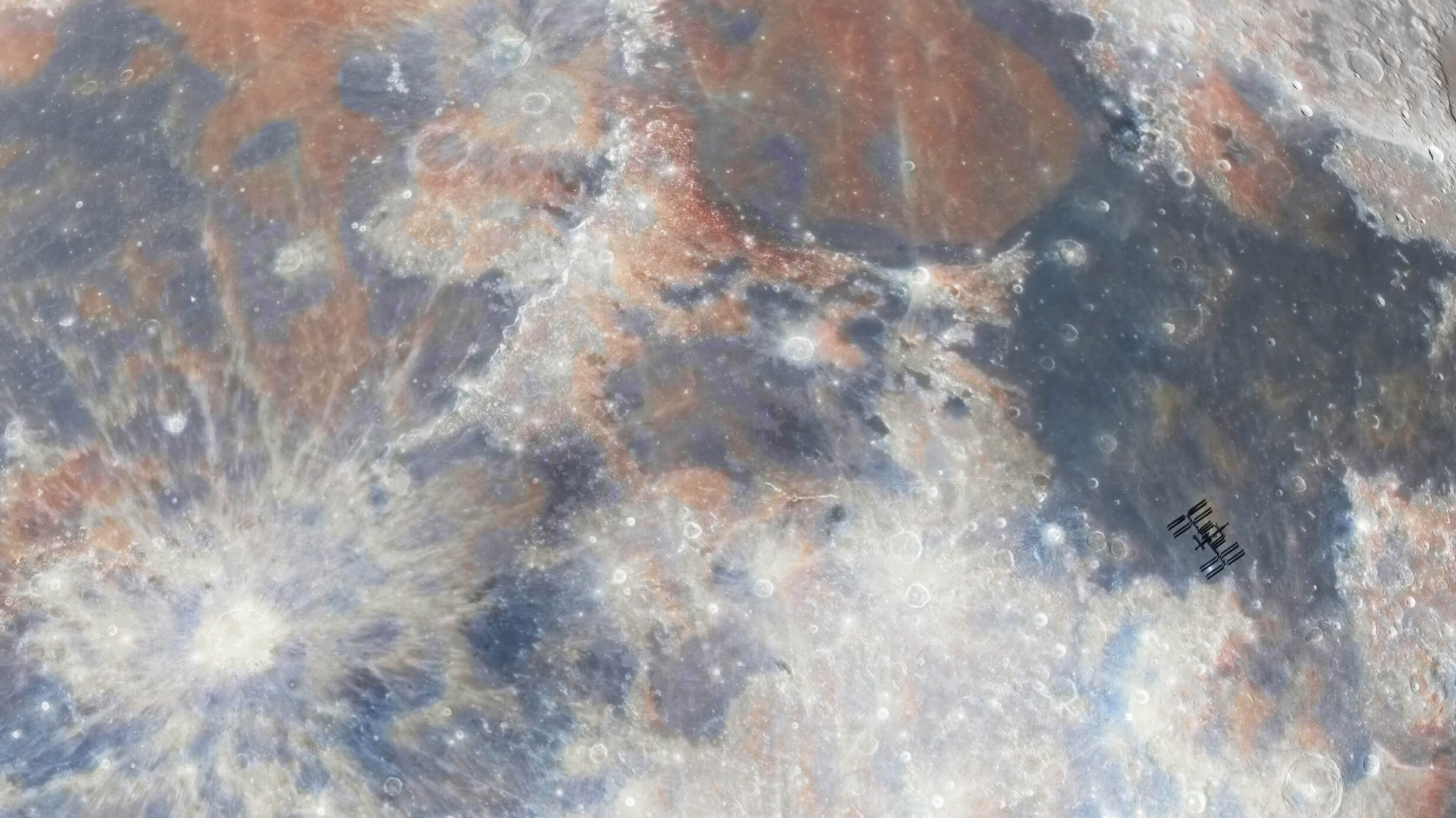
Andrew McCarthy puts the International Space Station into perspective as it traverses its stellar path. Mighty though it may be, the picture highlights how small we truly are.
“The symbol of man, the tiny silhouette of the ISS, is dwarfed by the vast and detailed lunar surface, colored by mineral deposits. It shows us just how fragile we are,” notes judge Francsics.
Aurorae
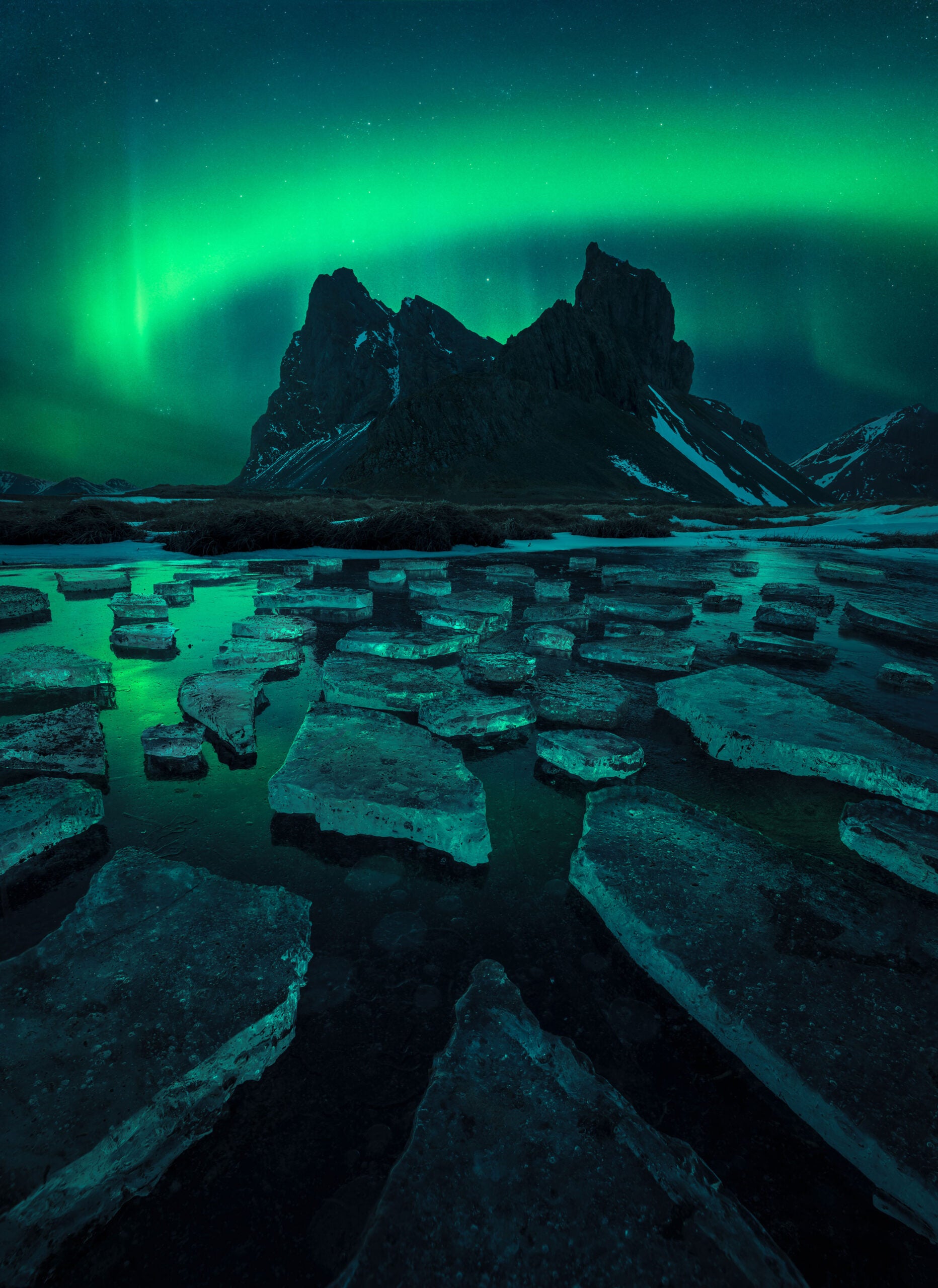
Jagged chunks of ice glow softly in the gentle light of an aurora, which streaks green against a dark, starry night sky.
“I love this photo because it really sums up aurorae for me: the green ‘swoosh’ reflected in the icy lake, the clarity of the edges of the ice blocks and the looming shadow of the mountain,” comments judge Sheila Kanani.
Galaxies
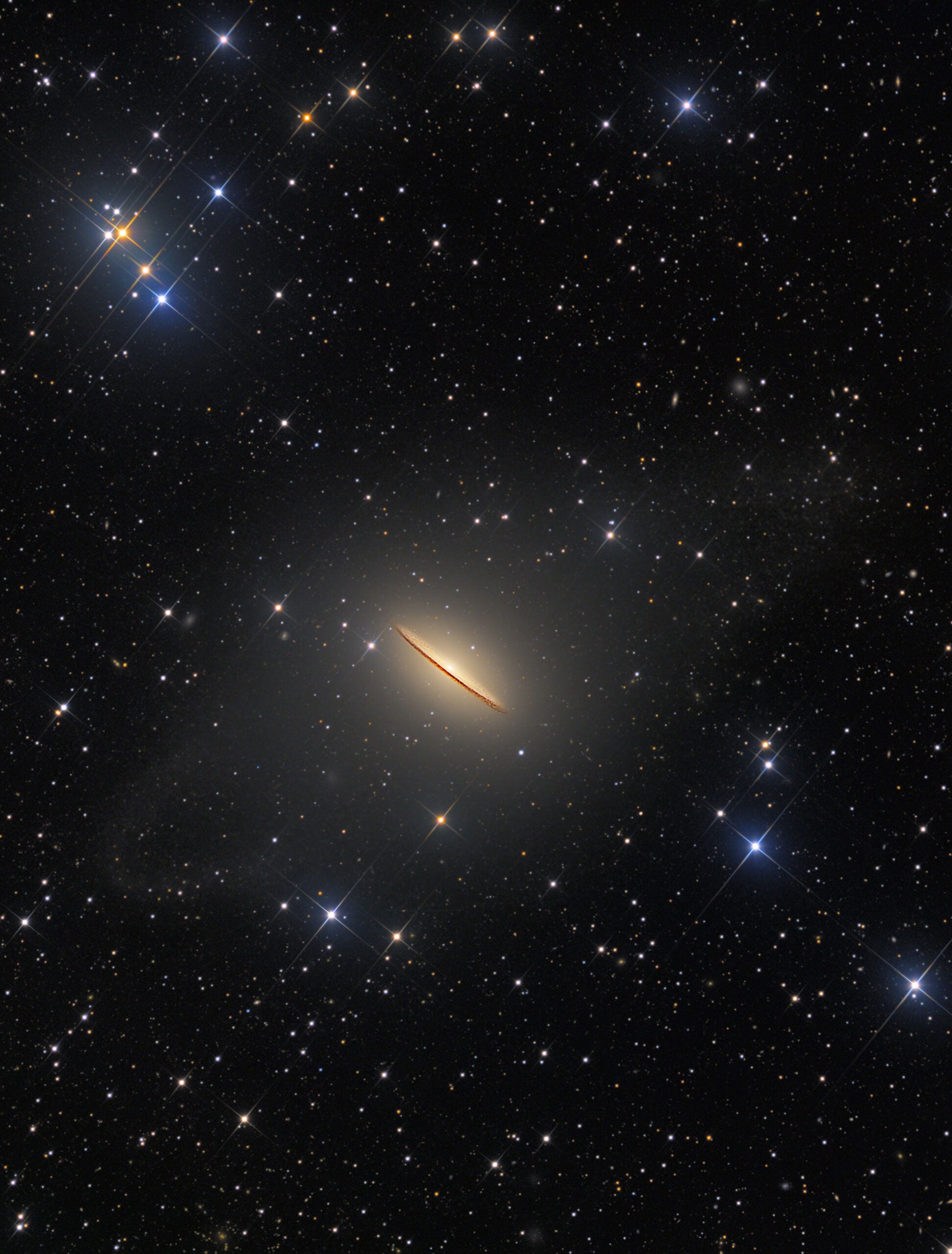
The team of Utkarsh Mishra, Michael Petrasko, and Muir Evenden claimed the Galaxies category prize with Majestic Sombrero Galaxy. Upon closer inspection, you can see where it gets its unusual name: the faint galaxy does indeed resemble a hat.
“The Sombrero is a well-documented galaxy, yet astrophotographers still find ways to tease more majesty from it. To see the misty remnants of previous collisions surrounding the galaxy, itself floating alone in the void, is just exquisite,” notes judge Steve Marsh.
Our Moon
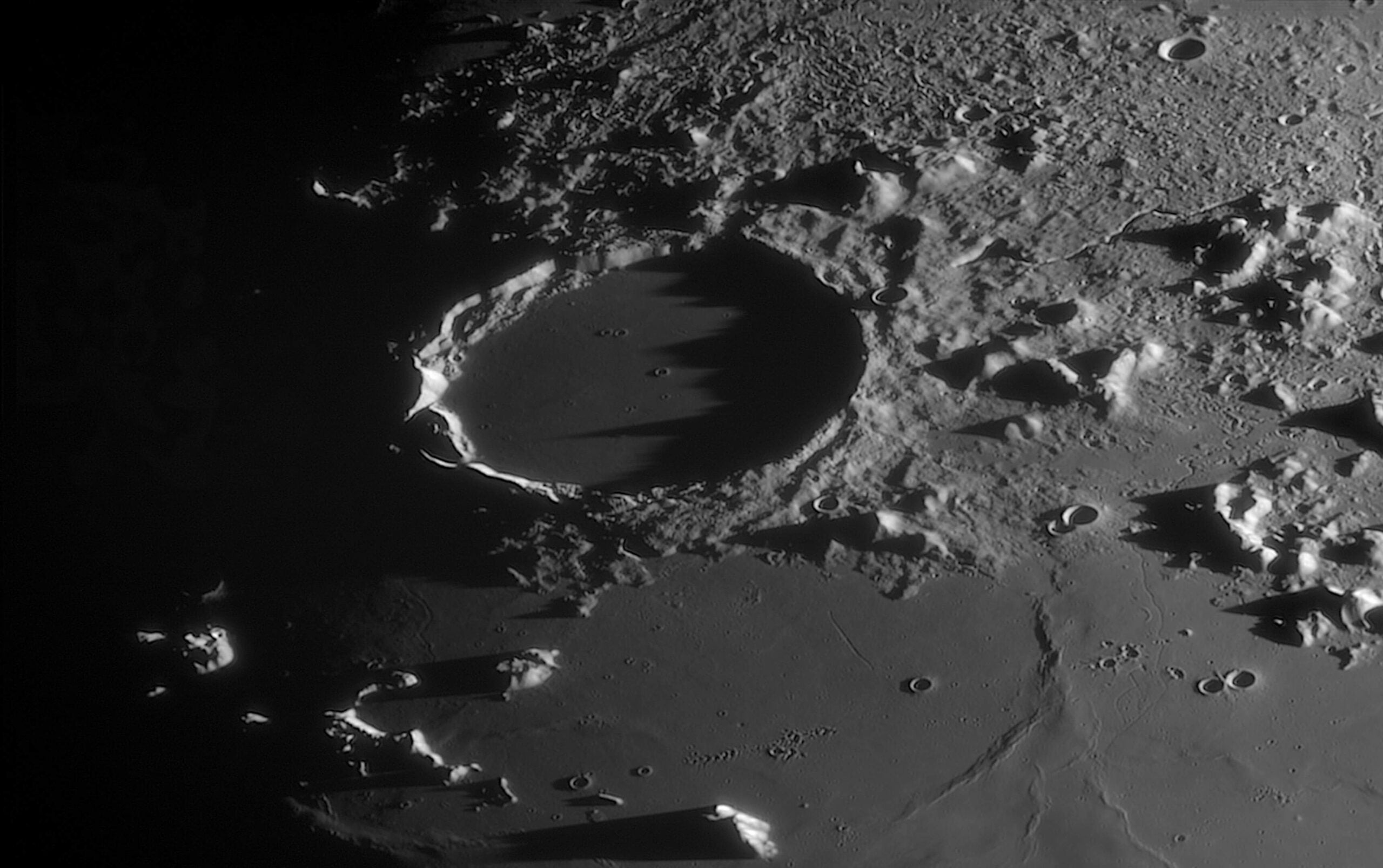
Martin Lewis is the winner of the Our Moon category with a stunning detail image featuring Plato’s East Rim. The stark lighting and heavy shadow add an element of mystery to an otherwise well-known fixture of space.
“This close-up of the Plato crater has become one of my favorite photographs of the Moon. This image of the east rim being hit by the Sun’s rays is wondrously unique and proves that, no matter how often we look at the Moon, it always has many more wonderful sights for us to observe,” says judge Brobby.
Our Sun
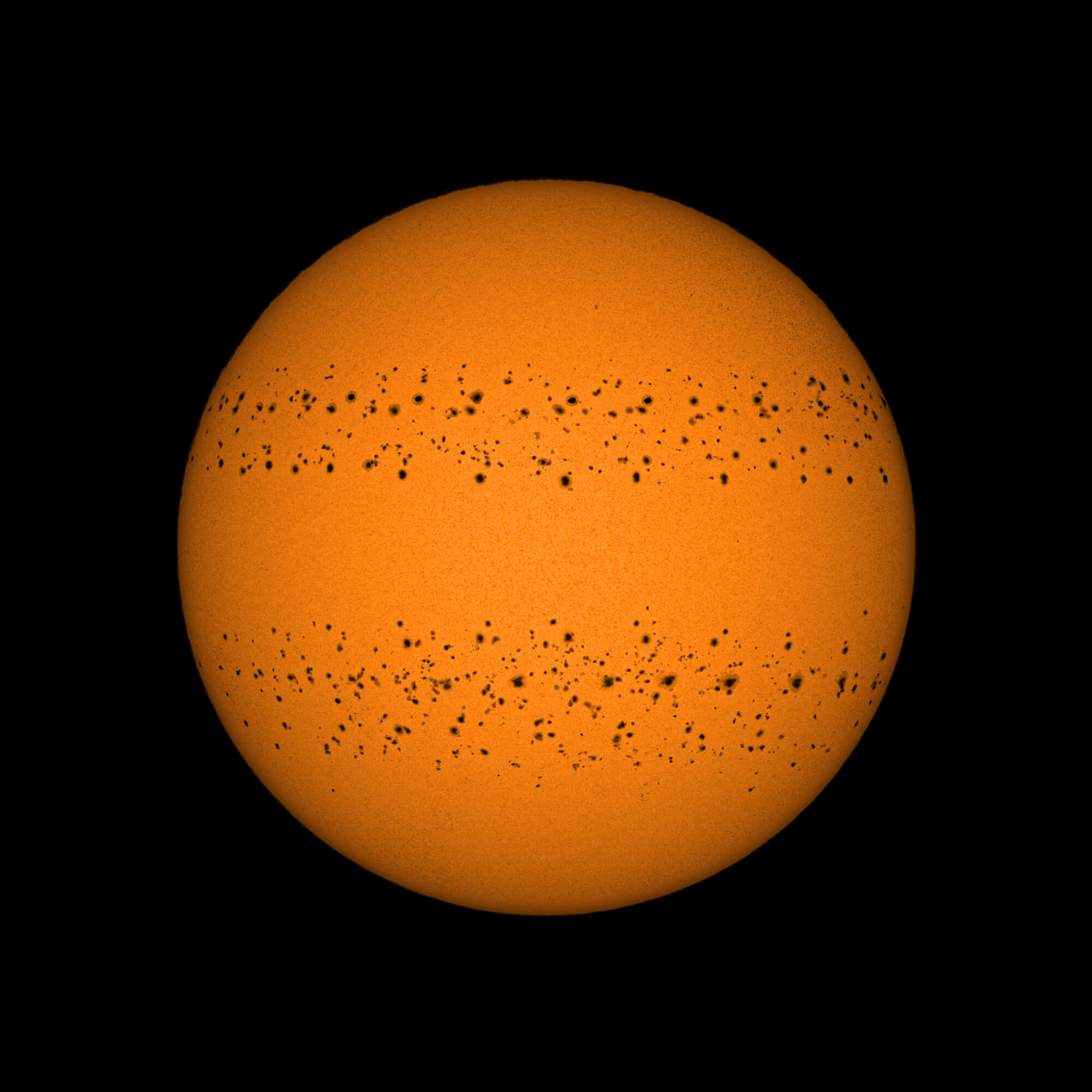
Here, the sun glows—not a fiery, explosive, bubbling dance, but rather projecting a powerful calm over the planets it presides.
“The commitment and diligence (not to mention luck) needed to image the Sun every day for a year is a feat within itself. But, more than just a matter of hard work, this photographer has achieved a fascinating and unique look at the progression of sunspot bands across its disc,” judge Marsh writes.
Stars & nebulae
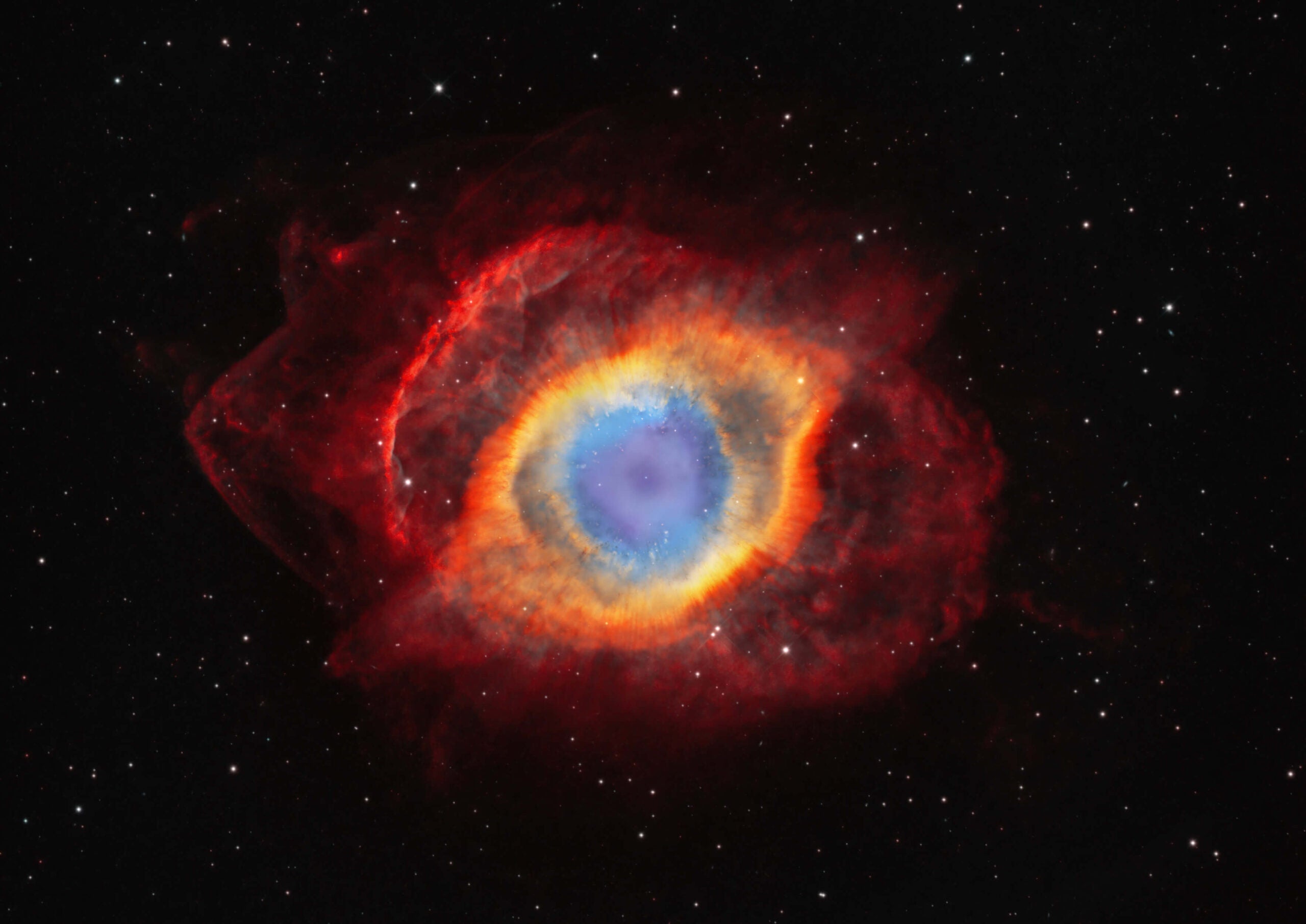
If a higher power is out there, Weitang Liang sure captured some convincing proof. It doesn’t look like anything you’d want to cross—but the beauty is dazzling nonetheless.
“The colors in this photograph make for a stunning composition—from the fiery red to the defiant, moody blue at the center of the ‘eye’. It’s easy to see how the ancients used to stargaze into the heavens and imagine that the cosmos was looking back, keeping a watchful eye over us,” shares judge Imad Ahmed.
The Annie Maunder Prize for Digital Innovation
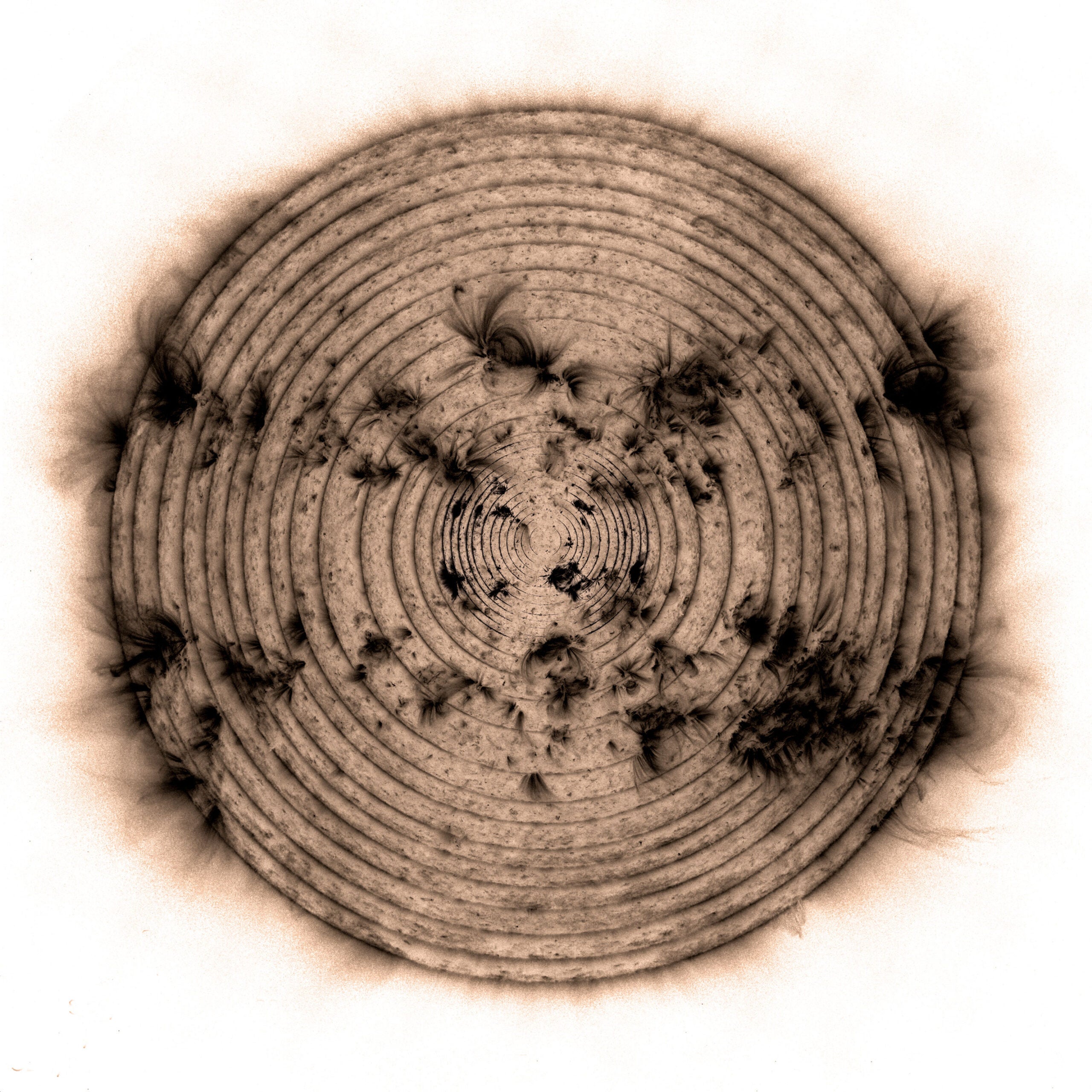
With a little bit of abstraction, Pauline Woolley transforms the sun into a desolate maze streaked by ominous black swirls that harken back to swaying branches in the wind.
“Dendrochronology—the scientific method of calculating dates based on tree rings—is used by art historians and conservators to date wood panel paintings, but here the technology has been utilized to create an unusual and beautiful composition. This is an innovative photograph that immediately astonished all the judges,” writes judge Hannah Lyons.
The Sir Patrick Moore Prize for Best Newcomer
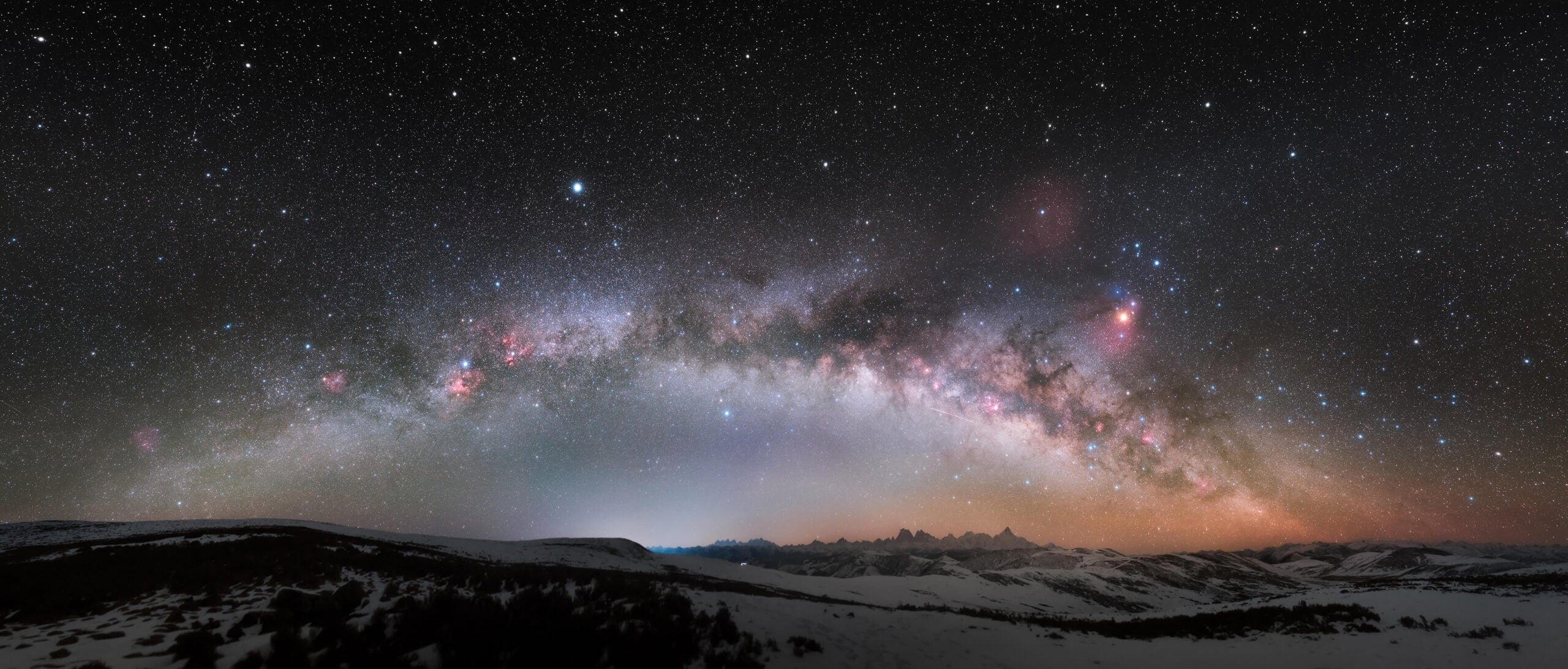
Stretching high into the starry sky, the Milky Way forms a celestial bridge across snow-capped mountains, earning Lun Deng the Sir Patrick Moore Prize for Best Newcomer.
“The icy, ragged mountaintop is contrasted beautifully with the Milky Way, the lighter pink and indigo hues of which offer us a mesmerizing, warm glow. I also have to commend the photographer’s dedication—standing in the snow in freezing conditions—to capture this picture!” judge Ahmed comments.
How to enter the Astronomy Photographer of the Year competition
The Astronomy Photographer of the Year competition is open to all photographers worldwide. The submission period begins on January 10, with a limit of 10 photos per participant. Check the website or the Facebook group for updated information and deadlines.
The post Ephemeral auroras and playful galaxies: these are the Astronomy Photographer of the Year winners appeared first on Popular Photography.